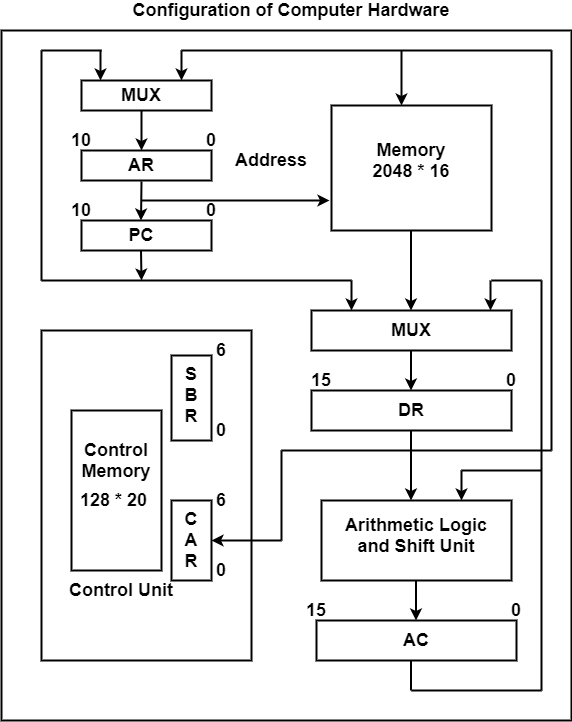The microcode for the control memory should be generated by the inventor once the configuration of the computer is settled. The generation of code is known as microprogramming.
There are various points to be treated while designing the microprogram sequencer are −
- Size of the microinstruction
- Time of address generation
The microinstruction’s size should be in the least, therefore that the control memory necessary is less and the cost is decreased. Microinstructions can be implemented at a quicker rate if the time to create an address is less. This results in raised throughput.
Disadvantage of Micro-program Sequencing
The disadvantage of microprogram sequencing is as follows −
- If each device instruction has an independent micro routine, therefore it results in the help of huger areas for storage.
- The branching needed more time for implementation.
Computer Configuration
The block diagram of the computer is shown in the figure. It consists of two memory units: the main memory for storing instructions and data, and a control memory for storing the micro-program.
The processor unit includes four registers are Program Counter (PC), Address Register (AR), Data Register (DR), and an Accumulator (AC). The control unit includes two registers are Control Address Register (CAR) and a Subroutine Register (SBR).

Multiplexers are used to send data within the registers in the processor. AR can get information from PC or DR. DR can get information from AC, PC, or memory. PC receives information only from PC.
The information from AC and DR can have arithmetic and logic operations and be located in the AC. The DR is the source of information for memory, where the information that is read can go to DR and no other register.




No comments:
Post a Comment